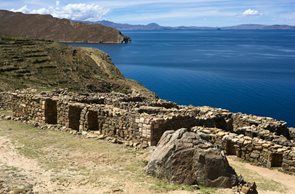
High in the Andes, Lake Titicaca’s pristine glacier-fed waters shimmer and sparkle with age-old secrets. Even before the powerful Inca civilization came into being, Peru’s earliest inhabitants believed that the lake was the source of all life and the home of a powerful and omnipresent deity.
These beliefs coalesced into the region’s origin myth, which bears striking similarities to aspects of both Judeo-Christian and Greco-Roman mythology. Scholars debate whether this is due to the narrative tradition of the Incas, who passed their myths and histories from generation to generation through complex stories, or comes from the Spanish explorers, who first attempted to capture the origin story in written form and may have - deliberately or not - incorporated their own religious stories.
The origin myth centers on the primary god of the Incas and their forbears: the omniscient, patriarchal god Viracocha, a name associated with “lake” or “sea-foam.” Viracocha emerged from Lake Titicaca and it was he who created the earth, the heavens and all living things. In one version, Viracocha, during a “dark age” created a race of giants from huge blocks of stone. But the giants misbehaved so Viracocha was obliged to destroy them with a massive flood - similar to the Old Testament God Yahweh in the story of Noah and the flood.
Viracocha then created the sun, moon, and stars from the lake and this heralded an “age of light.” Hereafter, Inca time would be measured in the duality of “light and dark” periods of 500 years, known as “pachakuti.” By their calculation, we are now in the tenth pachakuti, which signals a return to the light following the ninth pachakuti, a “dark age” in which the Incas fell to Spanish invaders.
Illuminated by the light he had created, Viracocha next made men and women out of clay, and endowed them with all manner of refinements, including the ability to speak, to till the earth, to fashion clothing, and to make art. This closely resembles the Adam and Eve story in Genesis.
Viracocha then donned various disguises, much as the gods of Olympus did, and, like them, he roamed the earth to try and spread civilization and knowledge to humanity, often disguised as a poor beggar. In Inca art, he is always portrayed as a man with a long beard and a staff. At some point, he departed from Peru, walking across the Pacific Ocean to a faraway land from which he will one day return.
Ancillary stories also speak of a lost etheric city, which lies under Lake Titicaca, waiting for the return of light and Viracocha to the cradle of civilization.
Alexander +Roberts help travelers parse the mysteries of South American countries like Peru, on carefully-planned itineraries such as
The Grandeur of Peru, which visits Lake Titicaca and other highlights of Inca civilization in Peru.